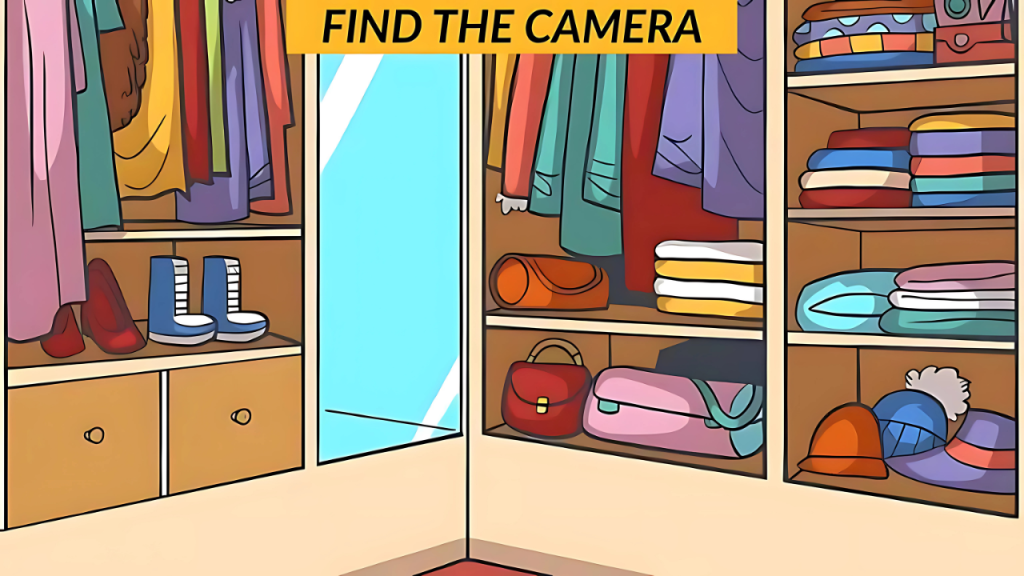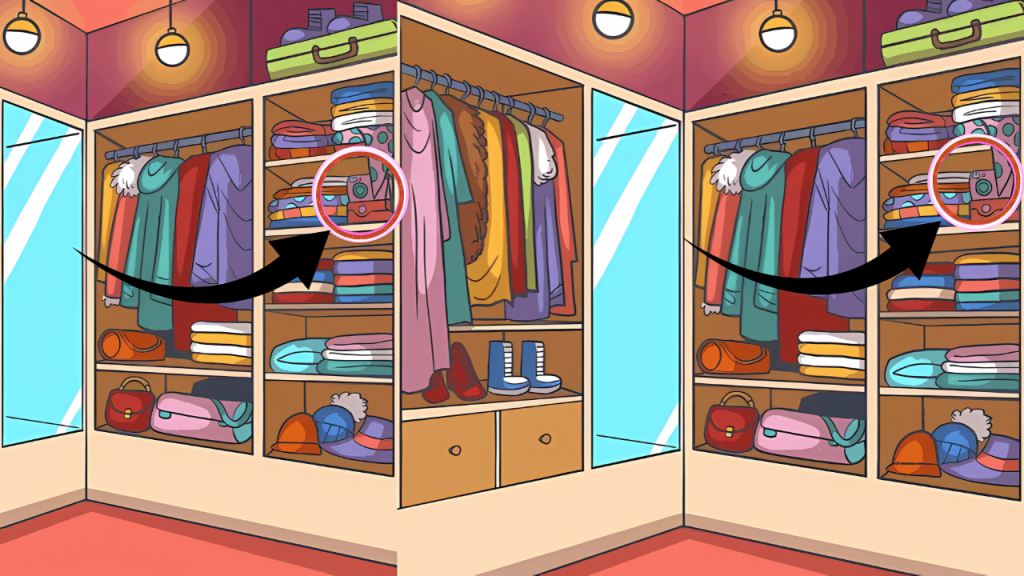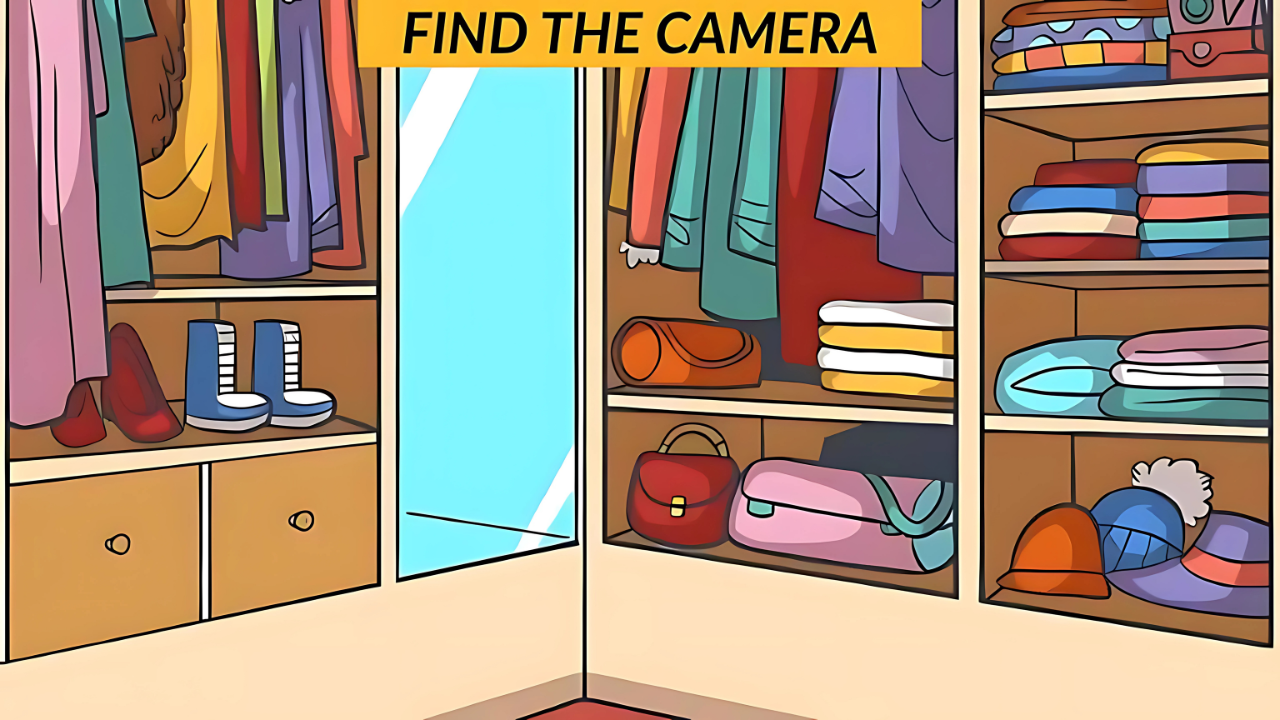Ever found yourself staring at a picture, knowing something’s hidden but just can’t see it? That frustrating yet thrilling feeling is exactly what makes optical illusions so captivating to our curious minds.
Today we’re diving into a particularly tricky visual challenge that’s been making rounds online. This deceptive image contains a carefully concealed camera, and supposedly only 1% of people can spot it within 10 seconds.
Why Hidden Object Challenges Test Your True Visual Intelligence
Our brains process visual information in fascinating ways. When faced with complex images, your mind must filter through competing visual signals and distinguish important details from distractions.
This particular camera-finding challenge taps into something scientists call “feature integration theory.” Your brain must combine separate visual features like colors, shapes, and shadows to identify the hidden object.
What makes this test especially difficult is how the hidden camera blends with its surroundings. The designer has cleverly used camouflage principles that trick your visual processing systems.
People with exceptional pattern recognition abilities can quickly filter out the visual noise. These individuals possess what researchers might call superior “selective attention” – allowing them to focus only on relevant visual information.

The Science Behind Why Most People Miss Hidden Objects
Your brain is constantly taking shortcuts. When looking at a scene, you don’t actually see everything in detail – your mind fills in gaps based on expectations and past experiences.
This efficiency usually serves us well in daily life, but creates blind spots during these challenges. Psychologists call this phenomenon “inattentional blindness” – we literally don’t see things that are right in front of our eyes.
The 10-second time limit adds another layer of difficulty. Under time pressure, your visual processing becomes less thorough and more prone to overlooking subtle details.
Interestingly, studies show that creative people often perform better on these tests. Their minds are more accustomed to considering unusual perspectives and thinking outside conventional patterns.
Strategies to Improve Your Hidden Object Detection Skills
Want to become better at spotting hidden items? Try approaching the image methodically rather than just scanning randomly.
Start by dividing the image into quadrants in your mind. Examine each section thoroughly before moving to the next, paying special attention to edges and shadows where objects often hide.
Another effective technique involves unfocusing your eyes slightly. This counterintuitive approach sometimes helps reveal patterns that aren’t obvious when focusing sharply.
Regular practice with various optical illusions strengthens your visual processing abilities. Much like a muscle, your brain’s pattern recognition systems become stronger with consistent training.
Common Camouflage Tricks Used in These Visual Puzzles
Designers of these challenges use several clever techniques to conceal objects. Understanding these deception methods helps you spot hidden items more quickly.
One common approach involves matching the hidden object’s color and texture to the background. The camera might share similar tones with surrounding elements, making it harder to distinguish.
Another tricky method is placing the object in plain sight but altering its orientation or scale. Your brain might overlook a camera that’s unusually small or positioned at an unexpected angle.
Sometimes the hidden item is fragmented, with parts scattered throughout the image. Your visual system struggles to integrate these disconnected elements into a recognizable object.
Why Only 1% Succeed: The Elite Visual Perception Skills
The claim that only 1% can solve this puzzle isn’t just marketing hype. There’s legitimate science behind why certain people excel at these visual challenges.
Some individuals naturally possess superior visual working memory. They can hold and manipulate more visual information simultaneously, giving them an edge in complex search tasks.
Research suggests that professional photographers, artists, and designers often perform exceptionally well on these tests. Their trained eyes are accustomed to noticing subtle visual details others miss.
Interestingly, children sometimes outperform adults on these challenges. Their visual systems haven’t yet developed the same filtering shortcuts that make adults overlook unexpected elements.
The Psychology of Satisfaction When You Finally Spot It
That “aha moment” when you finally find the hidden camera triggers a genuine dopamine release in your brain. This natural reward system explains why these puzzles are so addictive.
The frustration before discovery actually enhances the satisfaction. Psychologists call this “productive struggle” – the harder you work for the solution, the more rewarding it feels when you succeed.
This psychological principle explains why people share these challenges so readily on social media. Finding the hidden object becomes a badge of honor, a demonstration of superior perceptual abilities.
Even more satisfying is spotting the item within the challenging 10-second timeframe. This achievement places you in that coveted top 1% category, triggering feelings of exceptional accomplishment.
Optical Illusion Answer

Beyond Entertainment: Real-World Applications of These Visual Skills
These seemingly trivial puzzles actually test abilities that matter in many professional fields. Security personnel must possess exceptional observation skills to identify threats in complex environments.
Medical professionals, particularly radiologists, rely on similar visual discrimination abilities. They must spot subtle anomalies in scans that could indicate serious health conditions.
Search and rescue teams depend on these same skills when scanning difficult terrain for survivors. The ability to detect unusual patterns against natural backgrounds can literally save lives.
Even in everyday life, superior visual perception helps you notice important details others miss. From finding your keys in a cluttered drawer to spotting a friend in a crowded venue, these skills have practical value.
The Connection Between Optical Illusions and Critical Thinking
These visual challenges extend beyond mere entertainment – they actually strengthen cognitive flexibility. Solving them requires you to question your initial perceptions and consider alternative interpretations.
This mental agility translates to other areas of life. People who regularly engage with optical illusions often demonstrate enhanced problem-solving abilities in completely different domains.
The experience of being deceived by an illusion teaches valuable lessons about the limitations of perception. We learn that what we “see” isn’t always reality, an insight that promotes intellectual humility.
By challenging our most trusted sense – vision – these puzzles remind us to question our assumptions. This critical thinking mindset serves as protection against manipulation and misinformation in today’s complex world.
How to Create Your Own Hidden Object Challenges
Fascinated by these visual puzzles? Try creating your own! Start with a busy background with lots of details and patterns to provide camouflage opportunities.
Choose an object that can blend naturally with the setting. The best hidden items share visual characteristics with their surroundings while remaining technically visible.
Digital editing tools make this easier than ever. You can adjust opacity, color matching, and shadows to integrate your hidden object seamlessly into the background image.
Test your creation on friends and family before sharing more widely. Their feedback helps you calibrate the difficulty level – not so easy it’s boring, but not impossibly hard either.
The Future of Visual Puzzles in the Digital Age
As technology advances, we’re seeing increasingly sophisticated optical illusions. Augmented reality platforms are creating interactive puzzles that blend digital and physical worlds.
Neuroscientists are using these challenges to better understand visual processing pathways in the brain. Your participation in these games might indirectly contribute to important research.
Educational institutions are incorporating visual puzzles into curriculum to develop students’ observation skills and attention to detail. These “games” have serious learning applications.
As artificial intelligence becomes more advanced, we’re witnessing a fascinating competition. Can humans still spot patterns that sophisticated computer vision systems miss? These challenges help answer that question.
Quick Tips for Finding That Hidden Camera Within 10 Seconds
Need a strategic advantage? Try scanning the image from bottom to top rather than the more intuitive top-to-bottom approach. This reversal helps bypass your brain’s usual processing patterns.
Look for subtle geometrical inconsistencies. Cameras typically have distinct shapes that create slight disruptions in natural patterns or architectural elements.
Pay special attention to areas where light and shadow interact. Designers often use shadows to conceal objects, but these same shadows can create revealing outlines.
If still struggling, try turning the image upside down. This disorientation forces your brain to process the visual information differently, sometimes revealing previously invisible elements.
FAQ: Hidden Camera Optical Illusion Challenge
Does intelligence correlate with success in these challenges?
While there’s some correlation with IQ, these puzzles specifically test visual processing rather than general intelligence.
Can I improve my performance with practice?
Absolutely! Regular engagement with visual puzzles strengthens neural pathways involved in pattern recognition.
Why do some people spot the hidden camera instantly while others never see it?
Individual differences in visual processing, attention patterns, and prior experience all contribute to these varying results.
Are these challenges scientifically validated as IQ tests?
Most are not formally validated measures of intelligence, though they do test important cognitive skills.
What happens in my brain when I finally spot the hidden object?
You experience neural activation in reward centers, releasing dopamine and creating that satisfying “aha” feeling.
Can computer vision algorithms solve these puzzles faster than humans?
Current AI systems excel at some visual tasks but still struggle with contexts requiring human-like inference.
Why do we find these challenges so addictive?
The combination of challenge, momentary frustration, and rewarding discovery creates a compelling psychological loop.
Does age affect performance on these tests?
Visual processing changes throughout life, with some aspects declining with age while experience-based pattern recognition improves.
Can solving these puzzles help prevent cognitive decline?
Research suggests regular mental challenges, including visual puzzles, may contribute to maintaining cognitive function as we age.
How long have optical illusions been used as entertainment?
For centuries! Ancient civilizations created architectural optical illusions, while Victorian-era artists popularized hidden picture puzzles.
The next time you encounter that frustrating yet irresistible optical illusion challenge, remember you’re not just playing a game. You’re engaging in a sophisticated test of your visual intelligence and perception abilities.
So, did you spot the hidden camera within 10 seconds? If so, congratulations – your visual processing skills place you among an elite group of observers. If not, don’t worry – with practice and the strategies shared here, you’ll be spotting hidden objects like a pro in no time!
